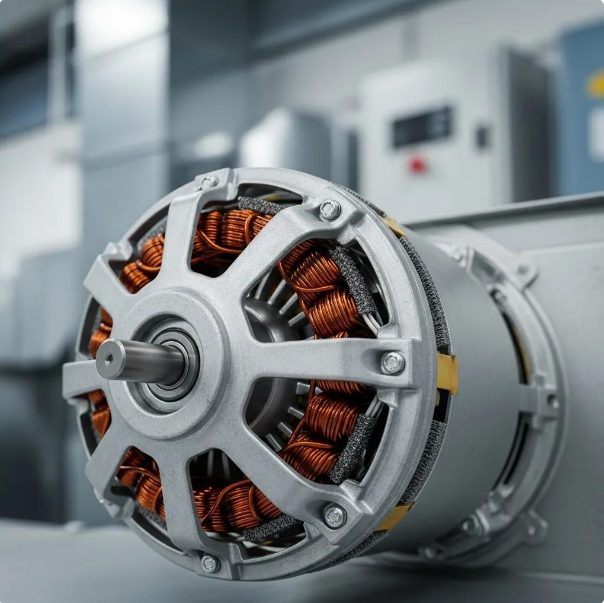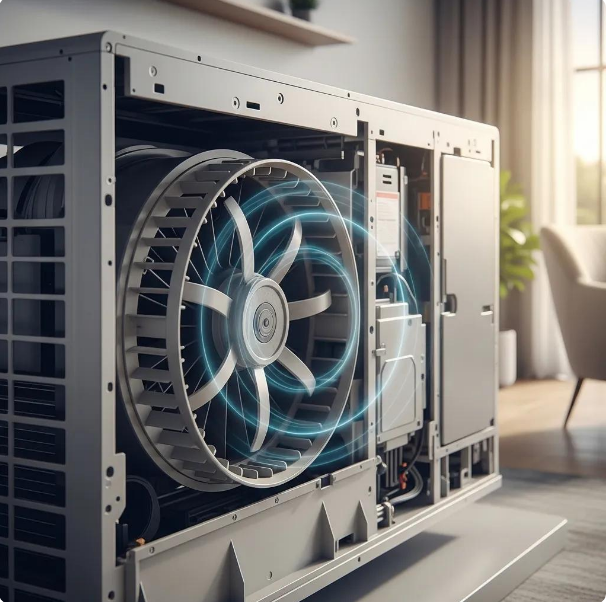Choosing between Split System vs Ducted: Differences, Pros and Cons


Government Rebates Now Available on Energy-Efficient Air Conditioners when Replacing your Gas Heater.
A split system air conditioning unit consists of an indoor unit connected to an outdoor compressor, providing cooling or heating for individual rooms. Ducted air conditioning, on the other hand, is a centralised system that distributes conditioned air through ductwork to multiple rooms or zones throughout a building.
The primary differences between the two systems lie in their installation, coverage area, and cost. Split systems are more suitable for cooling individual rooms, while ducted systems offer whole-house climate control.
The most important factors to consider for split system vs ducted are:
1. Home size and layout
2. Budget
3. Energy efficiency requirements
4. Aesthetic preferences
5. Long-term climate control needs
What is Split System?
A split system air conditioner, also known as a ductless, mini-split, or multi-split system, consists of an indoor unit connected to an outdoor compressor. It works by using refrigerant to transfer heat between the indoor and outdoor units, either cooling or heating the room as required.
Types of split systems include:
1. Wall-mounted
2. Floor-mounted
3. Ceiling-mounted
4. Cassette
The average cost for purchasing a split system ranges from $600 to $5,500, depending on the size and features. Running costs vary but typically range from $0.25 to $0.95 per hour. Cooling capacities range from 2.5kW to 9kW for residential units. General maintenance includes regular filter cleaning and annual professional servicing.
Main advantages of choosing a split system:
1. Cost-effective for single room cooling
2. Easy installation
3. Energy-efficient operation
4. Flexible placement options
Main disadvantages:
1. Limited whole-house cooling capability
2. Multiple units required for multiple rooms
3. Visible indoor units may affect aesthetics
What is Ducted Air Conditioning?
Ducted air conditioning, also called central air conditioning or ducted reverse cycle air conditioning, is a whole-house climate control system that distributes conditioned air through a network of ducts. It consists of a central unit, typically located in the roof space or outside, connected to vents in multiple rooms.
Types of ducted systems include:
1. Reverse cycle (heating and cooling)
2. Cooling only
3. Add-on cooling (for homes with existing ducted heating)
The average cost for purchasing and installing a ducted system ranges from $5,000 to $30,000+. Running costs vary but typically range from $2 to $5 per hour for whole-house operation. Cooling capacities range from 10kW to 20kW+ for residential units. Maintenance involves regular filter changes and annual professional servicing.
Main advantages of choosing ducted air conditioning:
1. Whole-house climate control
2. Discreet appearance
3. Zoning capabilities for energy efficiency
4. Consistent temperature throughout the home
Main disadvantages:
1. Higher initial cost
2. Complex installation process
3. Requires adequate roof space or outdoor area
4. Potential energy wastage if zoning is not implemented
What Are The Differences Between Split System and Ducted?
The main differences between split systems and ducted air conditioning lie in their installation, coverage area, cost, and flexibility.
Compared to ducted systems, split systems are easier to install and more cost-effective for single room cooling. However, ducted systems offer whole-house climate control and are more aesthetically pleasing due to their discreet vents.
Split systems are best suited for:
1. Individual room cooling
2. Homes with limited installation space
3. Targeted cooling in specific areas
4. Rental properties or temporary installations
Ducted systems are ideal for:
1. Whole-house climate control
2. New constructions or major renovations
3. Homes with adequate roof space or outdoor areas
4. Families seeking consistent temperatures throughout the home
1. Costs Differences Between Split System and Ducted
The cost of air conditioning includes purchase, installation, running, and maintenance expenses.
The purchasing and installation difference between split system air conditioning cost and ducted air conditioner cost is significant, with ducted systems being 200% to 500% more expensive. A basic split system might cost $1,500 installed, while a ducted system for a similar-sized area could cost $7,500 or more.
The running cost difference is typically 30% to 50% higher for ducted systems when cooling the entire house, compared to running a single split system. However, with zoning, ducted systems can be more efficient for whole-house cooling.
2. Energy Efficiency Differences Between Split System and Ducted
Energy efficiency in air conditioning refers to the amount of cooling or heating produced per unit of energy consumed.
Split systems generally offer higher energy efficiency for single room cooling, with some models achieving energy ratings of up to 5 stars. Ducted systems, while less efficient for single room cooling, can be more energy-efficient for whole-house climate control when properly zoned.
3. Cooling Capacity Differences Between Split System and Ducted
Cooling capacity refers to an air conditioner's ability to remove heat from a space, measured in kilowatts (kW).
Split systems typically range from 2.5kW to 9kW, suitable for individual rooms or small areas. Ducted systems offer higher capacities, ranging from 10kW to 20kW or more, capable of cooling entire homes or large commercial spaces.
4. Installation Differences Between Split System and Ducted
Installation timing and required space vary significantly between the two systems.
Split systems can usually be installed in 4-8 hours and require minimal space, with only a small hole needed for connecting the indoor and outdoor units. Ducted systems typically take 2-5 days to install and require substantial roof space or an outdoor area for the central unit, plus space for ductwork throughout the home.
5. Maintenance Differences Between Split System and Ducted
Maintenance requirements include regular cleaning and professional servicing to ensure optimal performance and longevity.
Split systems generally require less maintenance, with regular filter cleaning and an annual professional service. Ducted systems need more extensive maintenance, including regular filter changes, duct cleaning every 3-5 years, and annual professional servicing of the central unit and zone motors.
6. Aesthetics Differences Between Split System and Ducted
Aesthetics in air conditioning refers to the visual impact of the system on a home's interior and exterior.
Split systems have visible indoor units mounted on walls, floors, or ceilings, which can impact room aesthetics. Ducted systems are more discreet, with only small vents visible in each room, preserving the home's aesthetic appeal.
What Are The Pros And Cons of Choosing between Split System and Ducted?
Choosing between split system and ducted air conditioning involves evaluating various factors including cost, energy efficiency, cooling capacity, installation requirements, maintenance needs, and aesthetics.
Split systems offer lower upfront costs and flexibility for individual room cooling but may lack whole-house coverage. Ducted systems provide comprehensive climate control and better aesthetics but come with higher initial costs and more complex installation.
What Are The Advantages Of Split Systems When Compared To Ducted Air Conditioning?
The advantages of split system when compared to ducted air conditioning are listed below:
1. Lower initial cost
2. Easier and quicker installation
3. Flexible placement options
4. Individual room control
5. Higher energy efficiency for single room cooling
6. Easier maintenance
7. Suitable for homes with limited installation space
8. Ideal for retrofitting in existing homes
9. No ductwork required
10. Potential for staged implementation across multiple rooms
What Are The Advantages Of Ducted Air Conditioning When Compared To Split Systems?
The advantages of ducted system when compared to split air conditioning are listed below:
1. Whole-house climate control
2. More aesthetically pleasing with discreet vents
3. Consistent temperature throughout the home
4. Zoning capabilities for energy efficiency
5. Higher cooling capacity
6. Better air filtration options
7. Quieter operation in living spaces
8. Potential for increased property value
9. Single system to maintain
10. Ability to integrate with home automation systems
Split Systems Vs Ducted Air Conditioning: What to Choose for Melbourne Area?
For Melbourne's variable climate, both split and ducted systems have their merits, but the choice largely depends on individual circumstances.
Split systems are ideal for smaller homes, apartments, or for targeted cooling in specific rooms. They offer flexibility and energy efficiency, which is beneficial during Melbourne's mild winters and hot summer days. The ability to heat and cool individual rooms aligns well with Melbourne's unpredictable weather patterns.
Ducted systems, however, may be preferable for larger homes or for those seeking consistent climate control throughout the house. They're particularly advantageous during Melbourne's heatwaves, providing uniform cooling across multiple rooms. The zoning capabilities of ducted systems also allow for efficient management of Melbourne's 'four seasons in one day' weather.
Ultimately, the best choice depends on factors such as home size, budget, and specific cooling and heating needs. For expert advice tailored to your situation and Melbourne's unique climate, contact Oz Air Group at 1300 400 300. Our specialists can provide detailed information and recommendations based on your specific requirements and the local climate conditions.
Areas we service
Oz Air covers Melbourne and its northern suburbs.

Get in touch






.png)









.png)